Cataloging, Classification, and Deliberate Hybridizations
After the sixteenth century, when Europeans reached Asia, Africa, and the Americas, they saw many numerous new species of domesticated and wild plants and animals. Soon, surveying and systematic cataloging of the natural and biological resources ensued under the supervision of various experts. First, three or four experts went in small ships to survey the coastal areas of South America, Africa, and Asia. Typically, a geologist/naturalist would collect samples of rocks, soil, mineral, fossils, and plants and attach a note with each sample describing its features; an engineer’s job was to draw or update the navigational maps and gather information about ports and structures of strategic importance; an artist painted landscapes and helped experts prepare sketches of valuable items. From time to time, the collections from survey ships were sent to Europe via other ships. As a result of the various surveys and expeditions, the royal gardens of Europe were overwhelmed with the vast collections from around the world, and several experts were recruited for the analysis, classification, and systematic cataloging of fauna, flora, fossils, and other types of samples.
Besides experts, both elites and common folks, especially the elites and middle-class Europeans, were taken aback by seeing thousands of varieties of fruits, vegetables, and ornamental plants from around the world. Also, many small institutions got interested in acquiring exotic plants and gardening different plant varieties. Around 1650, when the educated elites got involved in growing ferns, tulips, fruits, and so on, the publication of gardening books and nursery catalogs began, and the first nurseries and seed and landscaping companies were founded. Amateur horticulturists in Europe and around the world started the conscious selection of a variety of fruits, vegetables, flowers, and cereals. Today, many of what we consider “natural” fruits, vegetables, and flowers are the result of this conscious selection in the last 300 years. For example, in the seventeenth century, orange carrots were developed in the Netherlands for the first time by the artificial selection of yellow carrots. In the natural form, wild carrots are white and thin. Around the tenth century, the people of Afghanistan had domesticated light yellow carrots, which the Arabs had taken to Europe. In the same way, larger tomatoes, berries, and corn were developed via conscious selection. The variety selection was upheld by several organizations, and annual exhibitions of fruit and flower products began in many cities. Even today, annual agricultural fairs and exhibitions continue throughout the world, and gardeners and farmers still consciously select varieties. For example, in South Asia, farmers have developed thousands of rice varieties to thrive in different climatic and geographical conditions.
4.1 The Discovery of Sex in Plants: Self- versus Cross-Pollinated Crops
The detailed investigation of plant morphology and anatomy and how these features change in relation to the plant’s habitat and/or in response to its environment led to tremendous advances in knowledge about the natural world and unveiled many mysteries. In this series, German botanist Camerarius (1665–1721) discovered sex in plants,[1] identified various parts of the flower (see figure 4.1), and classified plants into seven categories based on sex (flower structure).
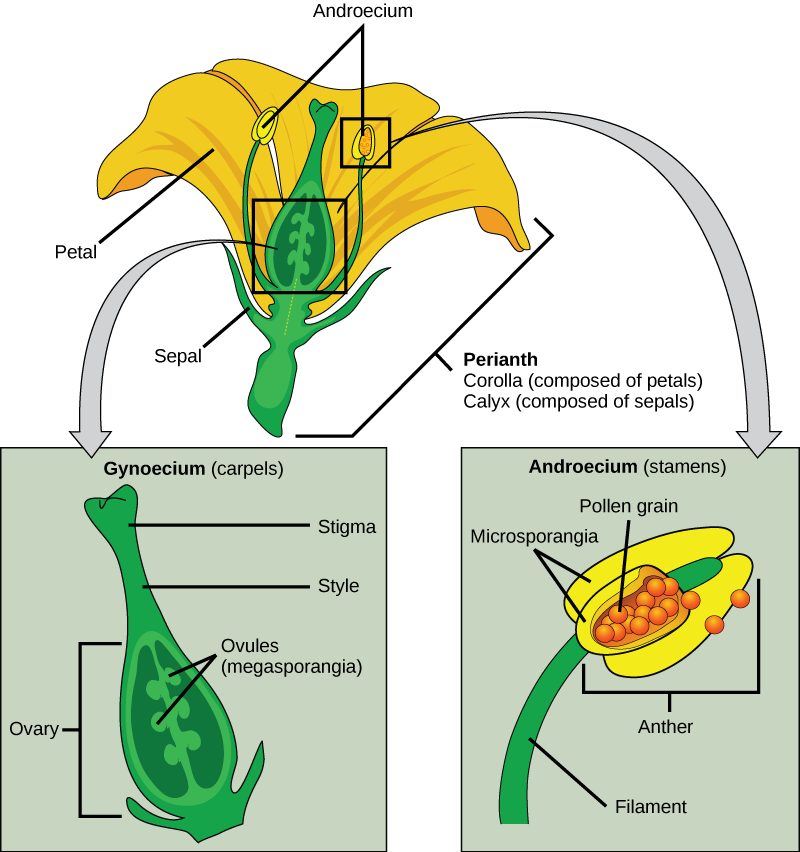
In the seventeenth century, it became common knowledge in Europe that seeds are the product of sexual union and flowers contain sexual organs.[2] If we look around carefully, we can easily spot the difference in the structure of flowers and identify the following seven types of sexes in flowering plants:
- Perfect/Hermaphrodite. These flowers contain all four floral organs (sepals, petals, stamens, and carpels). Examples are various flowers of the Brassicaceae family (i.e., mustard, radish, broccoli, etc.).
- Monoecious. These plants bear both male and female reproductive organs. Monoecious means “one home.” In cucumber, pumpkin, and gourd, separate male and female flowers are distributed randomly, whereas, in maize, the male flowers (tassel) hang on the top, and the female flowers are on the branch, which can be identified by their silk.
- Dioecious. In some species, separate male and female plants are present (e.g., dates, papaya, and Cannabis).
- Androecious. These plants contain only male flowers.
- Gynoecious. These plants contain only female flowers.
- Andromonoecious. These plants have male and perfect flowers (e.g., saffron).
- Gynomonoecious. These plants have female and perfect flowers.
- Trimonoecious. These plants have male, female, and perfect flowers (e.g., Datura).
Camerarius stated that pollen is required to reach the stigma to form fruit and seeds; this process is called pollination. Self-pollination (selfing) refers to the process when the pollen from the anther is transferred on the stigma of the same flower or another flower on the same plant. Cross-pollination (outcrossing) occurs when pollen from one plant is deposited on the flower (stigma) of a different plant of the same species. The structure of flowers determines the mode of pollination. Often, one can tell just by looking at a flower whether it self-pollinates or cross-pollinates. The self-pollinating flowers are small and monocolored; are unscented; have anthers close to stigma; and lack nectar guides. In these types of flowers, pollination and fertilization often occur in an unopened flower bud (wheat, barley, peanut), and resulting offspring are uniform. Typically, manual crossing is needed to produce hybrids.
In the wild, most flowers promote outcrossing, which supports the continuous mixing of gametes and new combinations of traits. Many species of animals (e.g., bees, butterflies, birds, and mammals) serve as pollinators; however, wind and water can also carry pollen from one plant to another. The outbreeders have many large, scented, bright-colored flowers that have nectaries present and stigmatic areas well defined and away from the anthers. We find extraordinary structural adaptations in flowers to attract a specific pollinator, and the shape and form of pollen are adapted to their mode of pollination (e.g., wind, water, insects, and mammals). For example, insect-pollinated species have sticky, barbed pollen grains, and wind-pollinated species have light, small, and smooth-surfaced pollens. The cross-pollination increases genetic variability and results in strong evolutionary potential for a species, allowing for adaptations to changing environmental and climatic conditions. However, it can be disadvantageous in certain circumstances; for example, cross-pollination can destroy well-adapted genotypes and relies on vectors for effective pollination and seed set.
Table 4.1. Examples of self- and cross-pollinated crops.
| Self-pollinated crops | Cross-pollinated crops | Cross/self-pollinated crops |
|---|---|---|
| Rice | Alfalfa | Cotton |
| Wheat | Cassava | Oilseed Rape |
| Barley | Corn | Tomato |
| Millet | Pearl Millet | Brassicas |
| Oats | Rye | Potato |
| Flax | Safflower | |
| Legumes (cowpea, beans, chickpea, lentil, mung bean, etc.) | Sugar Beet | |
| Tobacco | Sugar Cane | |
| Potato | Sunflower | |
| Tomato | Carrot | |
| Sesame | Cucumber family (cucumber, melons, pumpkin, squash, etc.) | |
| Jute |
4.2 The Classification of Plants
From the 1750s to the 1760s, the Swedish government sponsored a number of expeditions under the supervision of Carolus von Linné (Linnaeus), a professor of medicine and botany at Uppsala University (see figure 4.2). His team collected thousands of fauna and flora samples, and after a comprehensive study, Linnaeus proposed the binomial system of naming plants and animals (see figure 4.3).
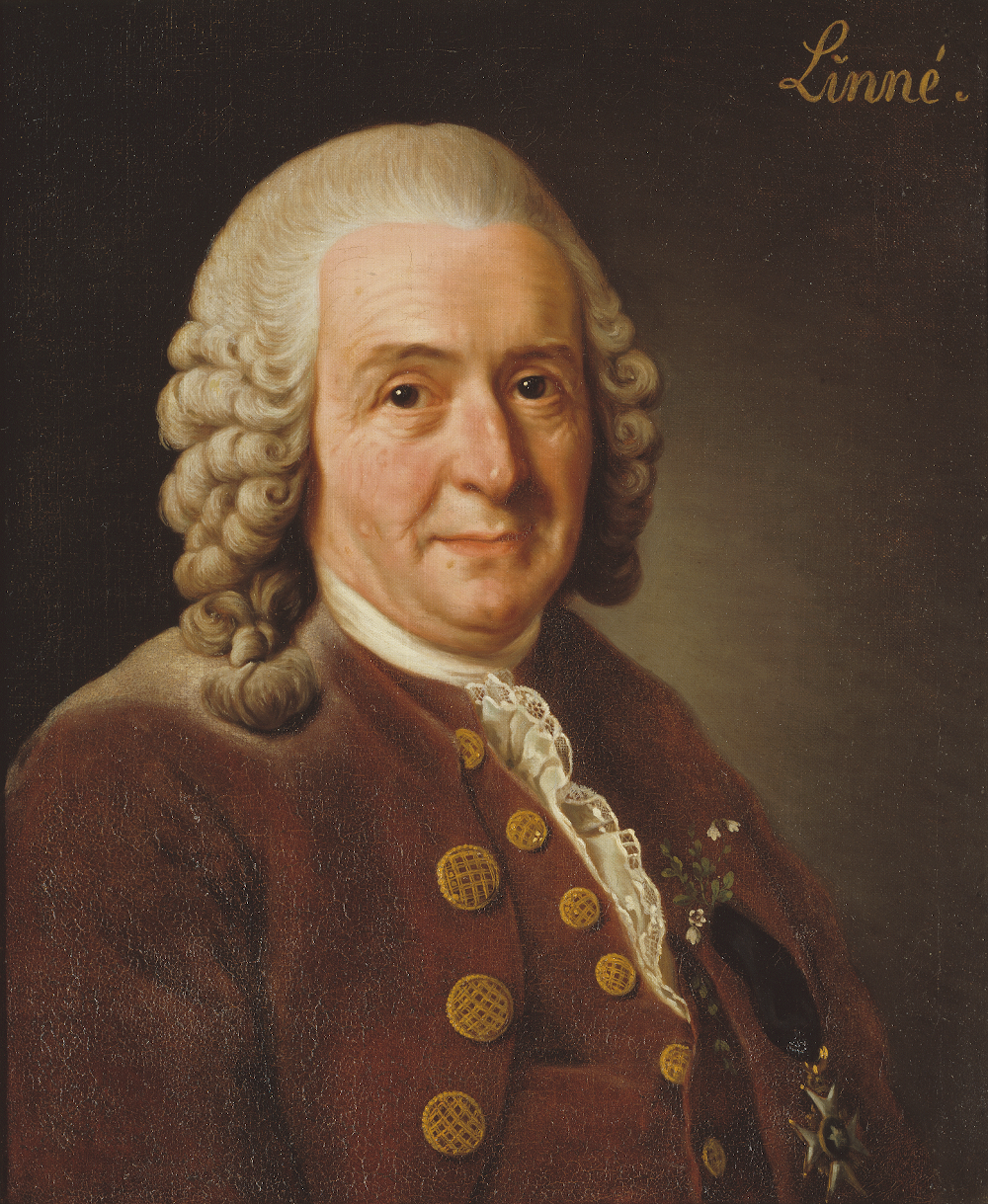
The smallest unit in the Linnaeus system[3] of classification of organisms is species. He proposed that the males and females of one species can give birth to a healthy progeny, but in a different species, they may not. He then organized the species that are closest in their structure under one genus and many genera having similar characteristics into a family. Then based on further similarities, many families were grouped into an order, several orders were grouped into a class, and several classes were grouped into a phylum. Finally, all the plant phyla were grouped into the plant kingdom, and all the animal phyla were grouped into the animal kingdom (see figure 4.3). Linnaeus proposed two Latin names for the scientific nomenclature of organisms, of which the first name indicates genus and the second indicates the species. Thus the scientific name of a human is Homo sapiens, and the rice plant is Oryza sativa. In this system, the genus part of the name comes first and is always capitalized; it is followed by the species name, which is not capitalized. Both names are italicized. Later, Linnaeus’s binomial method was also used for naming and classifying bacteria, fungi, and other microscopic organisms.
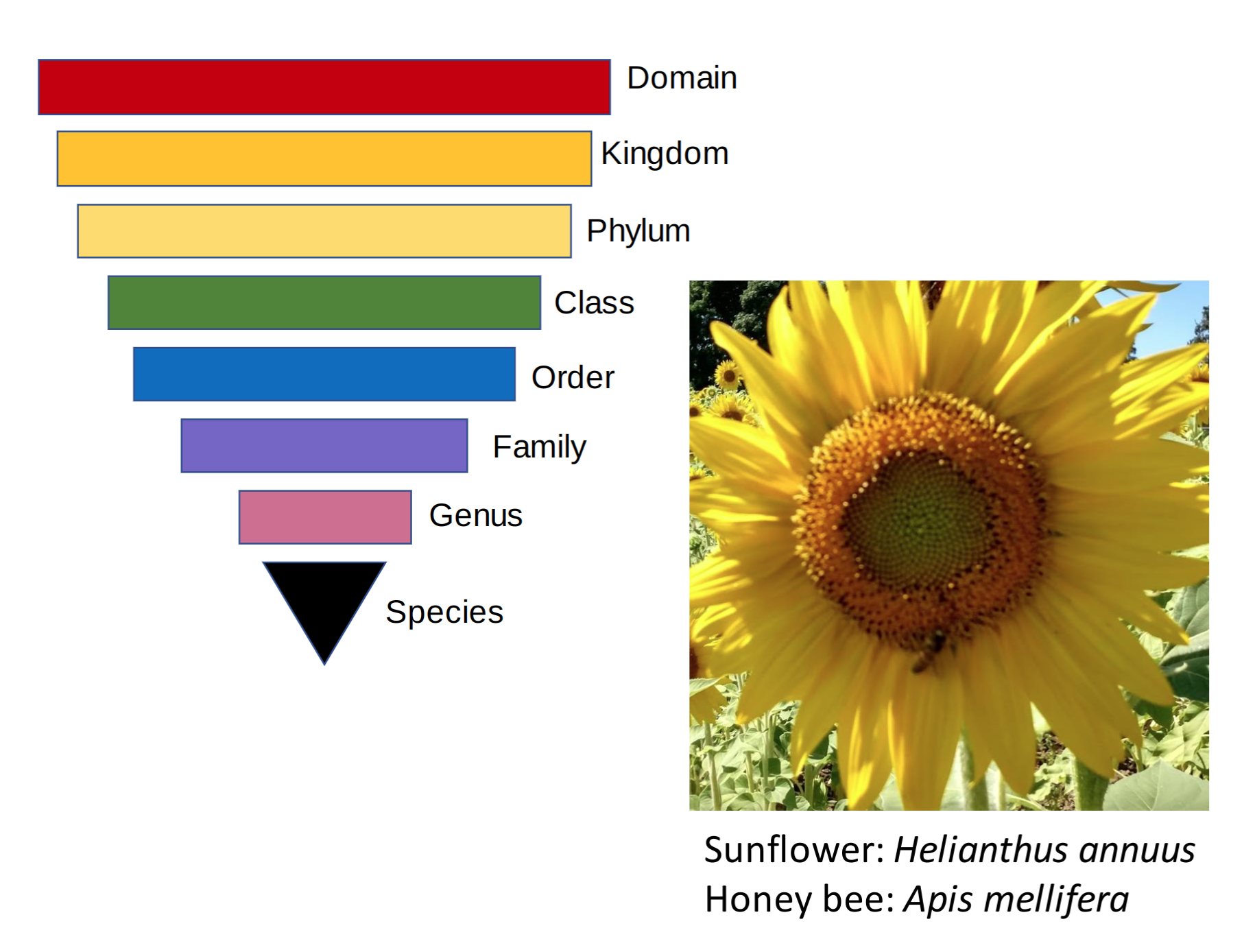
Linnaeus laid the foundation of taxonomy, which aims to study biological diversity and provides guidelines for classification, description, identification, and naming of living organisms. Classification is the grouping of organisms based on their shared characteristics (anatomy, structure, morphology, reproductive behavior, etc.).[4] In general, organisms that share similar features are closely related and are placed in a group. Thus the binomial system also provides an insight into the evolutionary history (phylogeny) of organisms. Just as Mendeleev’s periodic table of elements helps in understanding the atomic structure of various elements, the basic understanding of the structure and relationship of organisms is derived from the classification schema proposed by Linnaeus. Historically, the binomial method of Linnaeus was the first major theoretical understanding in the field of biology. Linnaeus became Europe’s greatest scientist in his lifetime.
4.3 Deliberate Hybridizations
Understanding the flower structure and the pollination process made artificial pollination possible and paved the path for crop improvement by deliberate hybridization. It became possible to develop new and improved varieties by crossing two varieties with desirable traits. However, in the absence of a theoretical understanding of laws that govern heredity, the selection of desirable hybrids was almost impossible and a work of trial and error. Thomas Fairchild (1667–1729), a nursery owner in England, was likely the first breeder who succeeded in creating a hybrid pink by crossing carnation and sweet William in 1717. His hybrid is also known as Fairchild’s mule. Fairchild gave a lecture on the crossing in the meeting of the Royal Society that was subsequently published in its journal, Philosophical Transactions as “Some New Experiments Relating to the Different and Sometimes Contrary Motion of the Sap in Plants and Trees.” He is also credited for writing the first book on gardening.
After forty years of Fairchild’s research, Linnaeus carried out extensive crossing experiments. He described flowers as “marriage beds” of plants and considered the flower structure as one of the important criteria for developing classification schema for plants. In 1757, Linnaeus crossed two species of Tragopogon and identified many plants that were products of spontaneous hybridization. Because of Linnaeus, European scientists, naturalists, teachers, and amateur gardeners got interested in crossing experiments, and the information about flower structure became public knowledge. In the following sections, we describe a brief review of some of the historic crossing experiments and the success of early plant breeders.
4.3.1 The Story of the Annanasa Strawberry
In 1711, Louis XIV sent Captain Amédée-François Frézier (1682–1773) on an espionage mission to Chile and Peru, as France didn’t deem it appropriate to show overt interest in Spain’s colonies. Captain Frézier, an engineer by profession, traveled to South America and gathered information on fortresses, armies, supply routes, governors, and Indians (indigenous people). In Chile, he noticed a very large strawberry (see figure 4.4), almost quadruple the size compared to the alpine or woodland strawberry (Fragaria vesca) found in Europe or the Virginia strawberry (Fragaria virginiana) in North America that was brought to France by Jack Cartier (known for discovering the St. Lawrence River in the US) in the seventeenth century. Both F. vesca and F. virginiana were wild varieties and have not been domesticated. People often used to collect their fruits from the forest during the season. However, from the fourteenth century onward, wild strawberry plants were introduced as ornamental plants in European churches and in royal gardens.
Interestingly, the Chilean strawberry (Fragaria chiloensis) spotted by Frézier was the only species of strawberry that humans had domesticated. The indigenous people of Chile were cultivating strawberries for more than 1,000 years. In 1550–51, when Spanish general Pizarro took over Chile, his army included strawberries in the list of plunders. Later, the Spanish expanded the cultivation of strawberries in Chile, and the royalty and elites of Spain enjoyed this delicacy. However, other Europeans remained ignorant of the existence of F. chiloensis (see figure 4.4) for almost 150 years. In 1714, Frézier brought five stolen plants of F. chiloensis (also known as the beach strawberry) into France. On his return voyage, Frézier faced many challenges (the inspection and search by Spanish customs officers, a pirate attack, and a shortage of drinking water) but was successful in keeping the strawberry plants alive. In the history of the modern strawberry, this journey of the Chilean strawberry was the most important event. Surprisingly, for the next fifty years, these strawberry plants never produced a single fruit in the French royal garden despite plenty of flowering. Bernard de Jussieu, head of the king’s garden, preserved and maintained several specimens of F. chiloensis and gifted its plantlets to other gardeners and his acquaintances. Finally, in 1766, Antoine Nicholas Duchesne explained that Frézier had selected fruit-bearing female plants in Chile, and all five plants that reached France were female. These female plants needed pollen to form fruits.
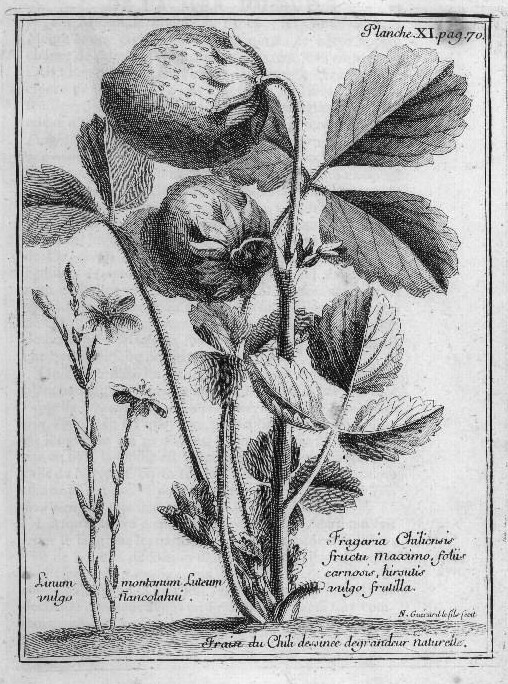
Duchesne was appointed the gardener of the royal gardens of France in 1760, and he worked under the supervision of Antoine de Jussieu. In the garden at Versailles, Duchesne noticed that the Chilean strawberry planted in between F. virginiana and the musky strawberry (Fragaria moschata) had produced a large fruit due to accidental cross-pollination. He then pollinated the female flowers of Chilean strawberries with pollens of the musky strawberry, which produced a huge and succulent strawberry fruit with a pineapple aroma. On July 6, 1764, Duchesne presented a bowl full of this large fruit to King Louis XVI. Madeleine Françoise Basseporte, the famous artist, painted strawberries for the royal botanic library, and Duchesne was given a grant to pursue his research on strawberries.
Bernard de Jussieu, the mentor of Nicholas Duchesne, was familiar with Linnaeus’s work and had instructed Duchesne about binomial nomenclature and the role of sexes in plants. Duchesne carefully observed the various strawberry plants present in the French royal garden and learned to differentiate between their male and female flowers. After this, he started experimenting with artificial pollination. First, he pollinated Chilean strawberries with the pollen from European woodland strawberry plants, but this did not result in fruit formation, but the pollination of the Chilean strawberry with pollens from F. moschata or F. virginiana did. Today we know that these compatibilities were related to the ploidy level of different strawberry species. F. vesca is diploid (two sets of chromosomes), and both F. virginiana and F. chiloensis are octoploids (eight sets of chromosomes).xiii F. virginiana produces small, highly aromatic fruits in abundance, and F. chiloensis bears big fruits (the size of walnuts). Duchesne crossed F. virginiana with F. chiloensis to make the hybrid Fragaria x ananassa (ananassa strawberry; x indicates that the strawberry is of hybrid origin), which produces large and flavorful fruits with pineapple (ananassa) aroma (see figure 4.5). The widespread cultivation of strawberries began with F. x ananassa. Therefore, the evolution of the strawberry from a wild to a cultivated plant is relatively recent, and it is a by-product of transatlantic exploration that involved three continents.
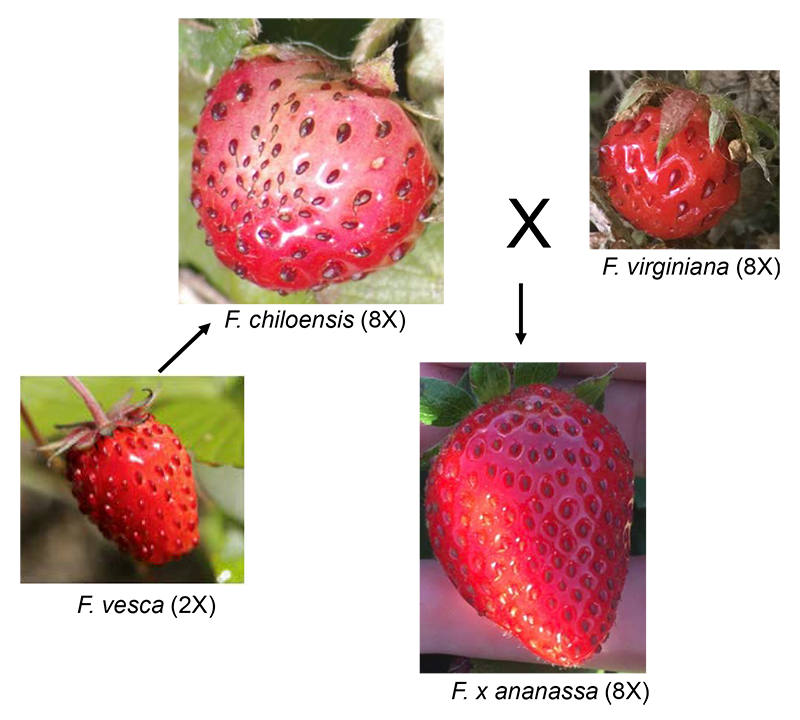
Duchesne also collected strawberry plants from all over Europe, recorded the relevant information, and wrote a report on the natural history of the strawberry. He also interviewed Captain Frézier fifty years later. There are species of strawberry native to regions all around the world, and after Duchesne, many other scientists collected thousands of varieties of strawberries. These varieties of strawberries have different ploidy, fragrance, flavor, and other physical attributes and are adapted to a wide variety of climates. Today, the largest germplasm collection of strawberries is in Corvallis, Oregon.
4.3.2 The Monks of the Austro-Hungarian Empire
Interestingly, the province of Moravia of the Austro-Hungarian Empire became one of the early centers of plant breeding in Europe.[5] The educated elites of Moravia held liberal beliefs in comparison to the remaining Catholic Europe and were invested in improving both education and local agriculture. Many clergymen got inspired by Linnaeus and quickly grasped the utility of deliberate hybridization in improving the local economy. Christian Andre (1763–1831), a social reformer, was one of the pioneers who advocated for plant and animal breeding in Moravia. He founded the Moravian Sheep Breeders Association and the Pomological and Oenological Society of Brno. He collaborated with many of his contemporary horticulturists and breeders, including Jan Sedlacek and G. C. L. Hempel. Abbot F. C. Knapp (1792–1867) of the monastery of Brno was another early influence in Moravia’s breeders and took a keen interest in improving fruit trees and grapevine. He had planted over a hundred varieties of grapes in the monastery’s nursery and encouraged local farmers to plant fruit trees. In 1840, Knapp organized a large gathering of local farmers and forest officials and explained to them how to make hybrids.
The breeding efforts in Kuninn were also noteworthy. In 1796, Father J. Schreiber began teaching crossing as a part of the natural science curriculum in Kuninn. This school was founded by the countess Maria Walpurga Truchsess-Zeil and provided education to village children for free.
It is said that the greatest concern of the bishop of Brno around 1854 was that his subordinate clergy were paying more attention to natural science, crossing, and nursery than to religious work. It is believed that Brno’s monastery narrowly escaped being closed. Some decades later, one of those priests, Gregor Johann Mendel, discovered the fundamental principles of genetics.
However, breeding in those early stages was more of an art than a standardized scientific technique. The common understanding of heredity was similar to the mixing of two colors: the mother’s and father’s traits mix and reach their offspring. It was with this understanding that the breeders chose the desired characteristics from the cross between two varieties. The task was as difficult as finding a needle in a haystack, and using trial and error, the breeders sometimes found the plants and animals they wanted. Only fewer than a dozen successful hybrids were made during that era, and fewer still had any significant traits. The ananassa strawberry has special significance in hybrid plants made in this era, and equally impressive is its story.
4.3.3 The Professors and Other Professional Breeders
Apart from monks and gardeners, many professors, teachers, and other professionals pursued crossings and plant breeding experiments out of their intellectual curiosity. Particularly in Germany, Joseph Gottlieb Kölreuter, Christian Konrad Sprengel, and Karl Friedrich von Gartner have contributed significantly to the current knowledge of pollination, hybridization, and heredity. Kölreuter (1733–1806), a professor of natural history at the University of Karlsruhe, Germany, carried out more than 500 artificial hybridization experiments involving 138 species. He made important observations about the role of insects as pollinators and examined the shape, color, and size of pollen grains from ~1,000 different plant species. He noted that successful hybridization occurs only between closely related species, and in offspring, some parental traits show up more often than others. Although he did not dwell deep enough in quantifying the ratio of various inherited traits, his experimental results foreshadowed Gregor Johann Mendel’s work.
Sprengel (1750–1816) followed Kölreuter’s work on hybridization and made the additional observation that normal sexual reproduction in plants leads to the mixing of traits from both male and female parents and thus creates new combinations in the offspring. This was a big conceptual leap toward understanding the source of diversity among the individual of the same species and an acknowledgment that living species are constantly changing rather than being fixed.
Gartner (1772–1850) was another contemporary of Sprengel, who pursued hybridization experiments as an amateur breeder. He was the physician son of famous botanist Joseph Gartner, who was familiar with the work of both Kölreuter and Sprengel. Over twenty-five years, he carried out ~10,000 individual crossings on ~700 plants (belonging to over 80 genera) and created 350 different hybrids. He also noticed that many hybrids bore larger flowers and fruits than their parents and appeared to be from a different species from their parents. Over the years, this phenomenon was noticed by many and was later named Hybrid vigor.
In England, botanist Thomas Andrew Knights (1759–1838) bred fruit trees and successfully made several hybrids, including those of pears and apples. He successfully crossed apple and Siberian crab apple and produced a hybrid that is known for making good quality cider. Like Sprengel, he observed the differences between plants of the same species and the mutability of various characteristics that constantly emerge and then disappear. In addition, Knights published over a hundred research papers on various aspects of plant physiology and founded the Royal Horticulture Society. He was also a member of the Royal Society and, in 1806, received the prestigious Copley Medal. Thomas Knight also conducted extensive crossing experiments in peas and found many of the same results as Mendel. However, he lacked the mathematical framework to analyze his results and could not decipher laws governing heredity.
Overall, by the early decades of the nineteenth century, numerous experiments of crossing drew the attention of experts and amateur gardeners on the variations among members of the same species and the potential of deliberate hybridization in improving crops and animal stock.
4.3.4 Darwin’s Insights from Crossing Experiments
Charles Darwin (1809–82) conducted extensive crossings in plants to understand the implications of self-pollination and outcrossing in plants and made two important observations: (1) In nature, the floral structure of most plants favor cross-pollination, and several structural and genetic barriers prevent selfing. (2) As a result of cross-pollination, new combinations of traits continue to emerge by mixing parental characteristics, which provides the raw material for natural selection. Since plants lack mobility, the traits promoting outcrossing were enriched as a result of natural selection to ensure the continued survival of the species. Darwin also reviewed the work of his predecessors and contemporary botanists, including Kölreuter, Sprengel, Gartner, and Knights. He highlighted the differences between crops and wild plants and identified the various domestication traits in both crop plants and domesticated animals. He made it clear that the direction of artificial selection moved in the opposite direction of natural selection, which led to the development of man-made crops and domestic animals.
Darwin’s most famous treatise, On the Origin of Species (published in 1859), began with a chapter entitled “Variation under Domestication,” which encapsulated his decade-long comparative study of domesticated plants and animals with their wild ancestors, their origins, and artificial selection by humans—all of which provides a basis for his theory of the bioevolution of living organisms using natural selection. In 1868, Darwin independently published The Variation of Animals and Plants under Domestication to cover a detailed description of the improvement in crop plants and livestock through artificial selection, the beneficial effects of outcrossing, and the harmful effects of inbreeding.
4.4 Star Breeders of the Early Twentieth Century
4.4.1 Luther Burbank: A Plant Wizard
Overall, the concept of deliberate hybridization and selection for a desired combination of traits in offspring gained popularity during the nineteenth century and continued until the first two decades of the twentieth century. The most successful and well-known breeder of this tradition was American gardener Luther Burbank (1849–1926). Luther Burbank (see figure 4.6) was born in 1849 in the city of Lancaster, Massachusetts. He received only an elementary education before starting work on a market garden. When he was twenty-one, his father died, and with his share of the inheritance, he purchased a seventeen-acre farm in Lunenburg. On this farm, he identified a natural genetic variant of potato that was large with russet-colored skin, famously known as the russet Burbank potato. This potato variety soon became popular and is used for making french fries. Burbank sold the rights to the russet potato for $150 and bought a four-acre farm in Santa Rosa, California. A few years later, he purchased an eighteen-acre farm in the nearby town. In both these farms, he laid the necessary infrastructure for greenhouses, nursery beds, and so on so that he can carry out crossings and selection work.
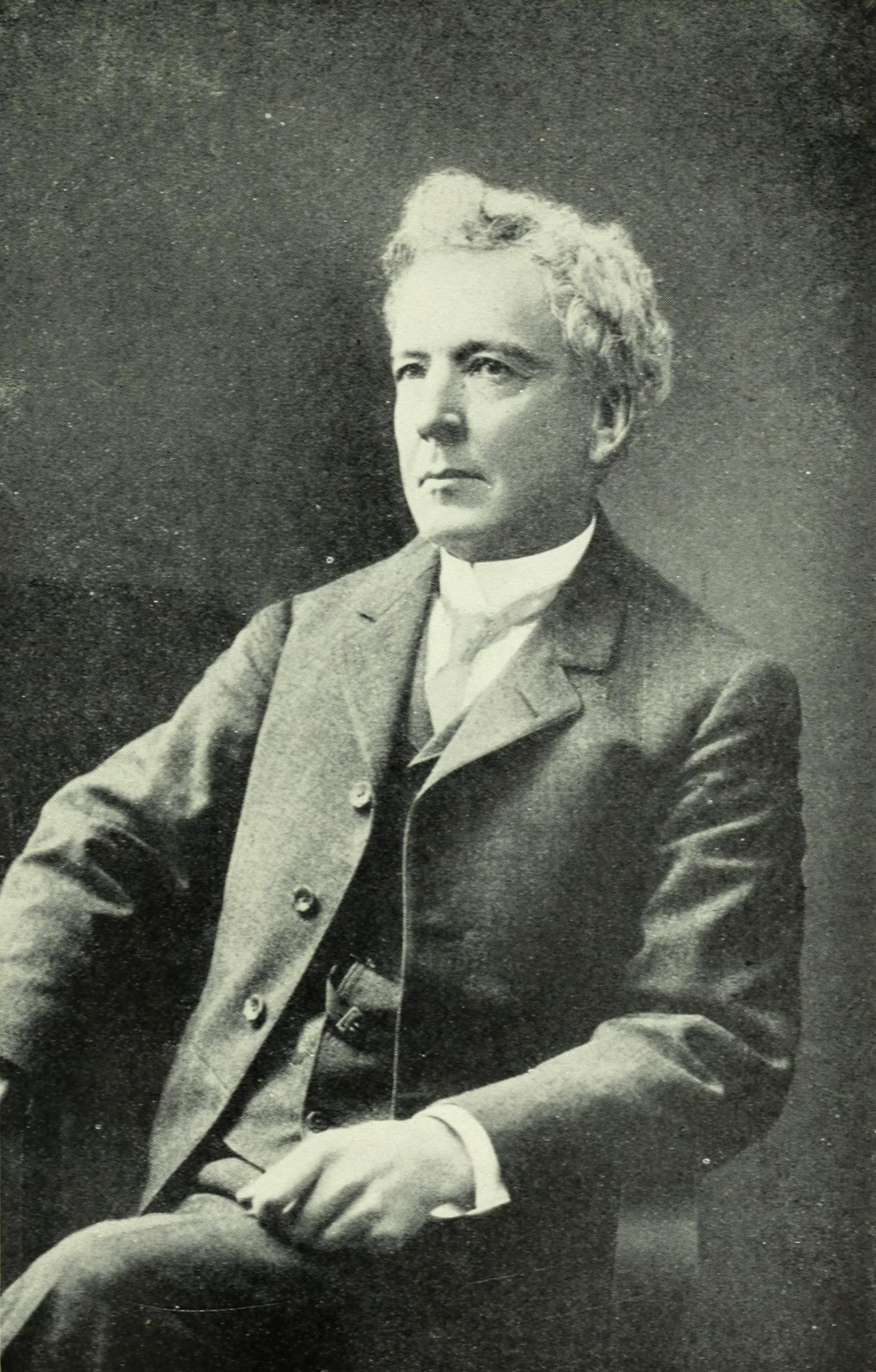
Although Burbank’s formal education was only up to primary school, he had learned about horticulture and farming from experience and an interest in the field. His breeding experiments were driven more by an artist’s instinct rather than the scientific understanding of the laws of heredity. He read Charles Darwin’s article about the changes in plants and animals as a result of artificial selection during the process of domestication. This was the article that sparked his interest in plant breeding. He understood that crossings could bring together unconnected gene pools and that finding the desired combinations of traits in the progeny is a rare event and thus requires extensive selection. From his crossing experiments, he selected the best, discarded the rest, and did not keep systematic records of crossing results and the parental strains involved. It is said that Luther simultaneously conducted more than 3,000 crossings at a given time, and millions of plants grew on his farms. Burbank perfected grafting, crossings, and hybrid selection. In his fifty-five-year career, he developed more than 800 new varieties of plants derived from 121 genera: 250 new varieties of fruit, including 113 plums and prunes, 10 strawberries, 10 apples, the russet potato; 34 spineless cacti; about 50 varieties of lilies; and the Shasta daisy. He inevitably sold his new varieties to other growers or nurseries for further commercial production. Andrew Carnegie showed a keen interest in Burbank’s work. And the Dale Carnegie Institute provided financial support to Burbank from 1905 to 1911. In 1893, Burbank published a catalog of his best plant varietals, New Creation in Fruits and Flowers, and also wrote other books on breeding experiments. It was the result of Burbank’s efforts that, in 1930, America began to patent advanced varieties of plants.
Because Burbank worked from his own experience and did not keep accurate records, it was not possible for other scientists to review and repeat his work. Famous plant breeders and geneticists, such as George Harrison Shull, Hugo de Vries, Liberty Hyde Bailey, and Nikolai Ivanovich Vavilov, visited him to learn his methods. Shull and de Vries invested time to understand and evaluate Burbank’s work and ultimately became frustrated with his random approach and lack of proper record keeping. However, Burbank became a celebrity in his lifetime and was referred to as the “high priest of horticulture” and the “plant wizard.”
Burbank died on April 11, 1926, in Santa Rosa from a heart attack. Nikolai Vavilov wrote a lengthy tribute in remembrance of Burbank. In 1940, a US postage stamp was released in his honor, and in 1991, he was elected to the American Society for Horticultural Science Hall of Fame. The Luther Burbank Home and Gardens, in downtown Santa Rosa, was designated a National Historic Landmark in 2003.
4.4.2 “Crank Gardener” Ivan Vladimirovich Michurin
Ivan Vladimirovich Michurin (1855–1935), a breeder in the Soviet Union, was a contemporary of Luther Burbank, but while Burbank became a celebrity breeder in his youth, Michurin remained hidden from the world until he reached old age. Michurin (see figure 4.7) lived on a rental farm in a small town named Kozlov near Saratov. Michurin was discovered by chance by Nikolai Vavilov. In 1920, Vavilov attended a conference in Saratov. After lunch, a junior scientist from the conference took the delegates for a walk in Michurin’s garden. The first meeting between young Vavilov and the sixty-five-year-old Michurin lasted several hours. Vavilov was deeply impressed by Michurin’s work but was stunned by the financial condition of this breeder, who was reclusive, paid all his attention to plants, and was considered “crazy” by people in the community.
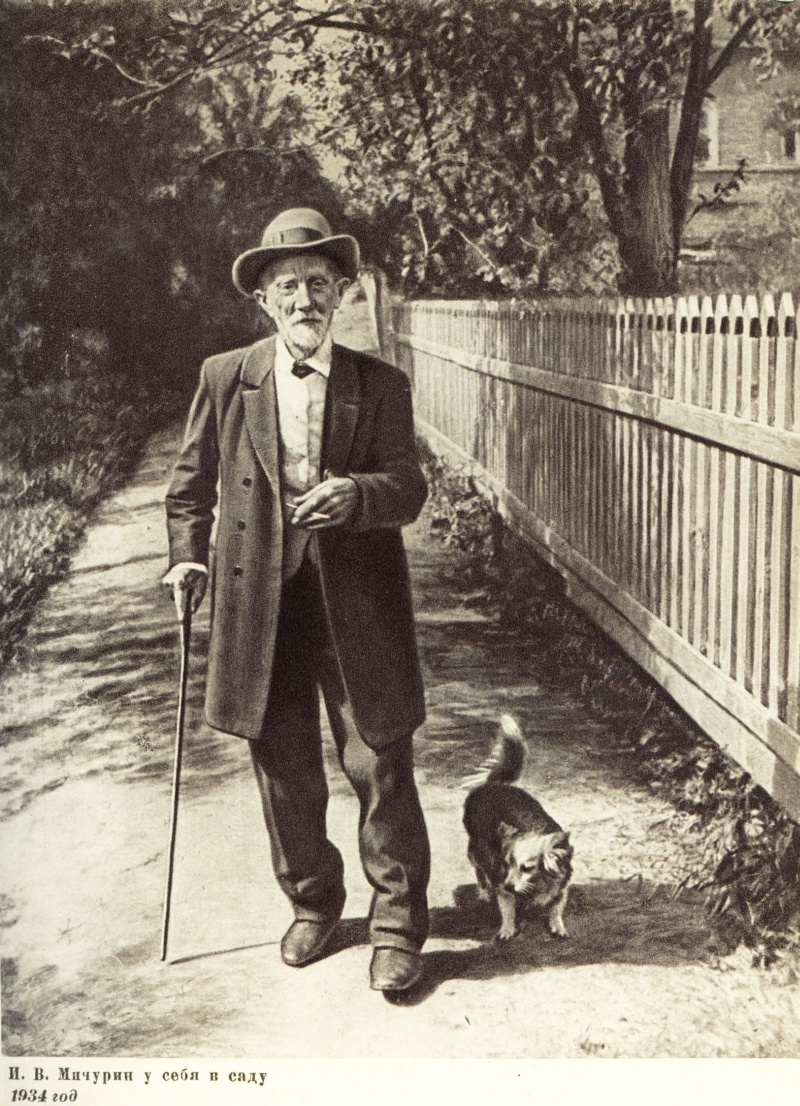
Like Burbank, Michurin had little formal education. His mother had died when he was a child, and his father had gone mad as Michurin reached his teens. At the age of twenty, he rented a small piece of land and started planting fruit trees in it. For fifteen years, he earned a living by working as a clerk, a watchmaker, and a telegraph operator, and when he was not working, he would continue to expand his garden. In 1899, he rented thirteen hectares (thirty-two acres) of land in Kozlov with his savings and brought along his plants. Then he spent thirty years grooming the farm. He had the passion of an artist with a keen eye of a clever gardener. He did not socialize with people and seems to be driven constantly by some sense of urgency for his nursery (that was not profitable). His economic condition did not improve, but he became famous as a “crank gardener” among the people. Throughout his life, Michurin’s focus was on developing new varieties of fruit trees. He learned crossing, grafting, and plant training through trial and error. He acquired many varieties of apples, pears, peaches, apricots, and grapes from distant provinces of Russia and used grafting techniques to make them flourish in Kozlov. Typical fruit trees could not quickly grow in this wintry area, but Michurin had worked for forty-five years and developed about 350 new breeds of fruit trees that could thrive in extremely cold climates.
Vavilov sent a proposal to the Ministry of Agriculture to have experts review Michurin’s breeding efforts, which was accepted. On top of that, the Soviet government rewarded him with 500 rubles, granted him the lease of the rental farm where he had set up those marvelous collections, and made that farm tax-free for his lifetime.
Vavilov’s meetings with Michurin revealed new information and important details such as how to create the best hybrid variety, how to select hybrids, and so on. Vavilov succeeded in extracting and distilling the life experiences of a clever gardener and provided scientific explanations for why a particular technique worked or not. Subsequently, the Soviet government awarded Michurin the Order of Lenin and the Order of the Red Banner of Labor for his contribution to the field of agriculture. In 1928, Michurin’s farm came to be known as the Genetic Station of Fruit and Berries, and in 1932, his town was renamed Michurinsk in his honor. In 1934, his farm was used for the I. V. Michurin Central Genetic Laboratory. In the last years of life, Michurin became a celebrity breeder in the Soviet Union.
4.5 Summary
Overall, in the nineteenth century, it became public knowledge that living organisms change and are not constant. One source of change in living organisms is sexual reproduction, which allows the mixing of parental traits in the offspring. It also became clear that deliberate hybridization and selection can be used for crop improvement and that many species of plants found in nature were the results of the hybridization of related plant species. Linnaeus himself saw this phenomenon and identified many naturally occurring hybrid plants. Later, many success stories of hybrids emerged, and the hit-and-miss approach of hybrid selection reached its prime in the first decades of the twentieth century with Luther Burbank and Ivan Vladimirovich Michurin. However, simultaneously efforts to understand the laws of heredity began, and a new field of genetics came into existence.
Further Readings
Chisholm, H. (Ed.). (1911). Camerarius, Rudolf Jakob. In Encyclopædia Britannica (11th ed., Vol. 5). Cambridge University Press.
Crow, J. F. (2001). Plant breeding giants: Burbank, the artist; Vavilov, the scientist. Genetics, 158, 1391–95. https://journals.ashs.org/hortsci/view/journals/hortsci/50/2/article-p153.xml
Darrow, G. M. (1966). The strawberry: History, breeding, and physiology (1st ed.). Holt, Rinehart and Winston. https://specialcollections.nal.usda.gov/speccoll/collectionsguide/darrow/Darrow_TheStrawberry.pdf
Darwin, C. (1868). The variation of animals and plants under domestication. John Murray.
Darwin, C. (1876). On the origin of species by means of natural selection, or the preservation of favored races in the struggle for life. John Murray. https://www.darwinproject.ac.uk
Janick, J. (2015). Luther Burbank: Plant breeding artist, horticulturist, and legend. HortScience, 50, 153–56. https://doi.org/10.21273/HORTSCI.50.2.153
Mayr, E. (1986). Joseph Gottlieb Kolreuter’s contributions to biology. Osiris, 2, 135–76. https://doi.org/10.1086/368655. JSTOR:301833.
Strawberry: A Brief History can be found at https://ipm.missouri.edu/meg/2012/5/Strawberry-A-Brief-History/
- Artificial pollination was in use since ancient times: Stone carvings from ancient Assyria (2400–612 BCE) clearly depict the artificial pollination of date palms (Phoenix dactylifera) and suggest that the knowledge of different sexes of date palms and the need for sexual reproduction did exist. However, this knowledge was not extended to other plants for deliberate hybridization and crop improvement. This phenomenon was also unknown to Europeans. Camareus made the first intellectual attempt to understand the structure of flowers and extended this knowledge to all plants ↵
- Many plants reproduce only asexually and do not produce seeds and flowers (e.g., money plant and duckweed). In addition, some flowering plants can reproduce asexually—including onion, potato, and gladiolus—as well as many trees that are propagated by using cuttings. The plants generated from asexual reproduction are genetically identical to their siblings and parent plant. ↵
- The original publications of Carolus von Linné (Linnaeus) are available at the Biodiversity Heritage Library website: https://www.biodiversitylibrary.org/browse/collection/37. ↵
- The schema proposed by Linnaeus served as a primer for the classification of plants and animals as well as provided a framework for comparative studies for the past 300 years. However, with the advancement of gene and genome sequencing, this schema is now being modified/updated. You can find the latest information on the Tree of Life web project at http://tolweb.org/tree. ↵
- Until World War I, Austria, the Czech Republic, Slovakia, Croatia, and Hungry were part of the Austro-Hungarian Empire ruled by the House of Habsburg. Moravia is now in the Czech Republic. ↵

